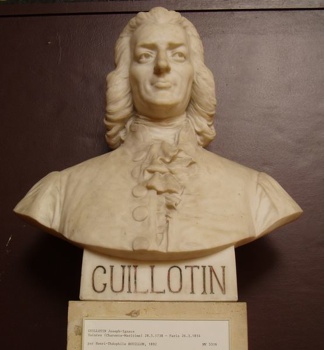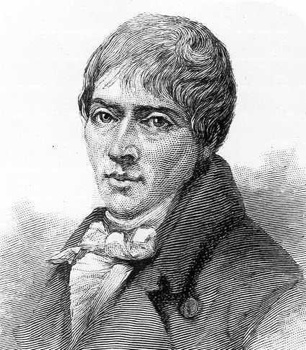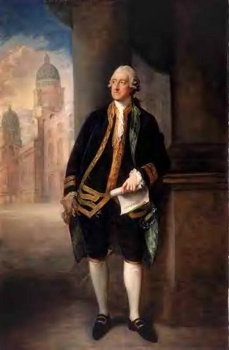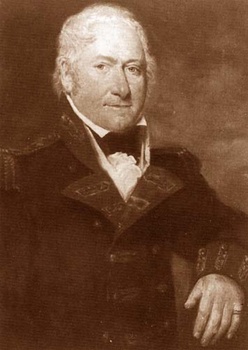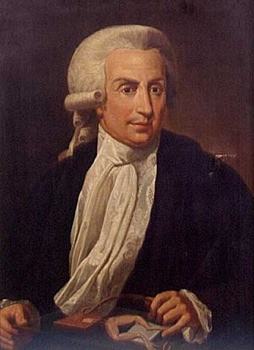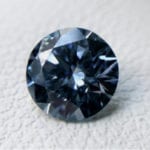 Movies and TV
Movies and TV  Movies and TV
Movies and TV  Mysteries
Mysteries 10 Mysterious Military Sites in America
 Weird Stuff
Weird Stuff 10 “Mysteries” That Prove We Live in Weird & Awful Times
 Animals
Animals 10 Terrifying Human Encounters with Swarming Animals
 Mysteries
Mysteries 10 “Ancient Alien” Artifacts That Have Mundane Explanations
 Miscellaneous
Miscellaneous 10 Everyday Terms with Surprising Historical Origins
 Humans
Humans 10 Genius Inventors with Highly Suspicious Deaths
 Weird Stuff
Weird Stuff 10 Weirdest Concept Car Designs Ever
 Movies and TV
Movies and TV The 10 Most Memorable Commercials of All Time
 Crime
Crime 10 Shocking Facts About the Electric Chair
 Movies and TV
Movies and TV 10 Actors Who Were Inebriated While Filming Major Movie Scenes
 Mysteries
Mysteries 10 Mysterious Military Sites in America
 Weird Stuff
Weird Stuff 10 “Mysteries” That Prove We Live in Weird & Awful Times
Who's Behind Listverse?

Jamie Frater
Head Editor
Jamie founded Listverse due to an insatiable desire to share fascinating, obscure, and bizarre facts. He has been a guest speaker on numerous national radio and television stations and is a five time published author.
More About Us Animals
Animals 10 Terrifying Human Encounters with Swarming Animals
 Mysteries
Mysteries 10 “Ancient Alien” Artifacts That Have Mundane Explanations
 Miscellaneous
Miscellaneous 10 Everyday Terms with Surprising Historical Origins
 Humans
Humans 10 Genius Inventors with Highly Suspicious Deaths
 Weird Stuff
Weird Stuff 10 Weirdest Concept Car Designs Ever
 Movies and TV
Movies and TV The 10 Most Memorable Commercials of All Time
 Crime
Crime 10 Shocking Facts About the Electric Chair
10 People Immortalized In Products
This isn’t intended to be an exhaustive list. It’s no more than a quick, random trawl through one personal memory tank. A comparative Wikipedia-based list has almost 100 entries from A to Z, but it was easy enough to think up a dozen important examples left out from that.
Qualifications: there is no obligation for the listed persons to have invented or created the object or process concerned. This is in any case frequently unrecorded, or impossible to verify. So far as is known, none of those listed have had their names immortalized as a result of deliberate theft of another’s work. The objects or processes included must be tangible or tangible processes involved in the creation of objects. A clerihew or spoonerism are abstract word manipulations and so don’t count. The same applies to Morse code and the Farenheit scale. A Caesarian operation might be said to have a product, a baby, but those born in that way do not then have ‘Caesarean’ attached to their names. Finally, and most difficult to assess, the name must have a general application, and not be restricted by sale or lease to one individual or company by patent or other restrictive practice. This would appear to disqualify Doc Martens boots, the mighty Wurlitzer, Gatling, Thompson and Browning guns and the Colt revolver, for example.
A few non-starters were dismissed during research. Sadly, it was found that no such persons as Herr Howitzer or Mistress Furbelow exist! However, the compiler was delighted to find he had a very familiar object named for him: the Spanner.
Biro or ballpoint pen
Quick-drying newspaper ink gave Hungarian-born Bíró his primary inspiration for the uniquitous pen that bears his name. He was working in journalism at the time. On discovering the ink would not function in an ordinary fountain pen, he co-opted his brother Georg, a chemist, and between them they developed the now-famous ball-and- socket tip. The invention was patented in 1938. During the Second World War they took up residence in Argentina and filed a second patent in 1943. The design was used effectively in high-altitude combat aircraft at the time, and took off commercially in the years immediately after peace was declared. Ballpoint pens have evolved to become reliable, clean, disposable and amazingly cheap. However, when my grandfather bought me one as a birthday present in 1949, it was made like an expensive fountain pen, boxed like one, priced like one, had a retractable tip and replacement ink cartridges. It also rapidly revealed the grave initial drawback of the design, smothering this particular schoolboy’s fingers, clothes and classwork with proliferating smudges of semi-indelible blue ink!
Bunsen burner
All who have willingly or under duress studied chemistry during their school years will be instantly aware of the piece of fundamental lab apparatus known as a Bunsen burner. For the benefit of those who escaped ‘stinks’, it consists of a round metal base with a vertical open-topped hollow tube connected by a rubber hose to a gas supply. The metal tube has an adjustable air inlet and the gas flow is also adjustable. When the gas is turned on and lit at the top of the tube, it provides a variable flame which can be brought to considerable heat as required for chemical experiments. Well, here’s the guy to blame for it, although you might prefer to hold the Englishman Michael Faraday responsible. He produced the prototype on which the German, Bunsen, based his design. Bunsen is also acclaimed for various other achievements in chemistry.
Diesel engine
Nobody is going to deny the mainstream importance of this particular French-born inventor and mechanical engineer of German origin and subsequent German residence; or deny they have ever heard of him. After a glittering career in the refrigeration industry was blighted by patent problems, Diesel turned his attention to the production of a more efficient motor than the steam engine and existing combustion engine. His excellent academic trajectory had left him with a keen knowledge of thermodynamics, from which, in 1892, emerged his first compression-ignition engine. With some trepidation as an Englishman, I have to report here that a tyke (Yorkshireman), Herbert Akroyd Stuart, is in fact considered to have invented the compression-ignition engine before Diesel. Apparently he even filed his patent two years earlier. So, all together now everybody, “the Stuart engine”. But, to the victor the spoils, as English football knows, having won the soccer World Cup from the Germans in 1966 by a goal that was not a goal. Diesel disappeared at sea while on his way by steamship to a company meeting in London. Considering the triumph of his system over steam, he might perhaps be said finally to have poured his oil on troubled waters (or was it Stuart’s revenge?). As a curiously modern tailpiece for those becoming more concerned with biofuels in this day and age, Diesel’s original motors ran on … peanut oil! Nothing new under the sun.
Ferris wheel or observation wheel
The name Ferris wheel is given to a large, slowly rotating upright wheel of open metal
structure with passenger seats or observation gondolas suspended at regular intervals around it. Modest sized examples are found at local travelling or fixed fairgrounds, larger ones have been created as showpieces for national or international exhibitions. The largest, such as the London Eye, form permanent fixtures on the urban landscape, and carry large numbers of visitors to considerable heights, from where sweeping vistas can be appreciated. As with so many widespread inventions, earlier precursors existed at a local level, the first recorded examples being constructed of wood and perhaps carrying eight or so passengers. These existed in the Ottoman Empire, at least from the 17th century onwards. Ferris, an American railway and bridge engineer, invented and gave his name to his metal wheel (and to all others subsequently) for the 1893 World’s Columbian Exposition. The original was 80 m high and had a capacity of 2160 passengers in 36 cars. It was powered by two steam engines and ran until 1906.
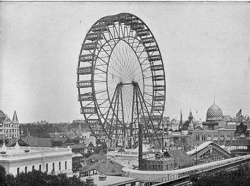 Given his full name, what a wonder it didn’t get called the Washington wheel! As it was, Ferris claimed that the Exhibition organisers had cheated him and the investors out of most of the profits. Like other inventors, he was driven to waste time, money and energy in the courts attepting to claim what was rightfully his by contract. As a rule successful inventors tend to live to a ripe old age. Ferris was one of the unfortunate exceptions. Typhoid fever claimed him early, at 37, a mere three years after his fame was sealed. As a boy I used to holiday every summer with my parents at Folkestone, Kent, and was always drawn to the attraction of a summer fairground there. It had a tower some 30-35 m high, from which a daring stuntman would dive into a ridiculously small container of water, after the manner of Duncan the horse in the Simpsons. I often took trips on its Ferris wheel. Our family has also experienced the spectacular views across London from the Millenium Wheel, or Eye, including as far as the pitch of the professional soccer team we support. What a shame the eponymous Ferris Bueller didn’t joy-ride on one during his cinematic Day Off.
Given his full name, what a wonder it didn’t get called the Washington wheel! As it was, Ferris claimed that the Exhibition organisers had cheated him and the investors out of most of the profits. Like other inventors, he was driven to waste time, money and energy in the courts attepting to claim what was rightfully his by contract. As a rule successful inventors tend to live to a ripe old age. Ferris was one of the unfortunate exceptions. Typhoid fever claimed him early, at 37, a mere three years after his fame was sealed. As a boy I used to holiday every summer with my parents at Folkestone, Kent, and was always drawn to the attraction of a summer fairground there. It had a tower some 30-35 m high, from which a daring stuntman would dive into a ridiculously small container of water, after the manner of Duncan the horse in the Simpsons. I often took trips on its Ferris wheel. Our family has also experienced the spectacular views across London from the Millenium Wheel, or Eye, including as far as the pitch of the professional soccer team we support. What a shame the eponymous Ferris Bueller didn’t joy-ride on one during his cinematic Day Off.
Guillotine
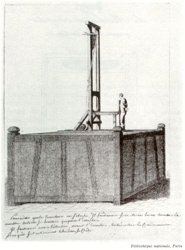 Oh, dear. Poor Dr. G. What a terrible object to be immortalised in. Although given her sex, and above all the sobriquet of ‘Madame Guillotine’, perhaps the bloody beheader might better be regarded as the good doctor’s wife! Guillotin, a French medic and politician, did not actually invent the gadget. Unlikely as it might seem too, the impulse that induced it was humanitarian. Up until then a principle object of capital punishment had often been to inflict the maximum pain by breaking the sentenced person’s body as slowly and agonisingly as possible before merciful release by the ending of life. At least once, this so incensed onlookers that they overcame the executioner and released the prisoner. With need for reform in the air, Guillotin proposed a system that would behead instantly and painlessly. Ironically, he was in fact opposed to capital punishment and hoped this would lead eventually to abolition. Happily, he passed away naturally, and did not fall victim to his eponymous death machine. We actually have a tame guillotine in our house. Provided we are careful to keep fingers out of harm’s way, it does nothing more sinister than trim paper to our needs.
Oh, dear. Poor Dr. G. What a terrible object to be immortalised in. Although given her sex, and above all the sobriquet of ‘Madame Guillotine’, perhaps the bloody beheader might better be regarded as the good doctor’s wife! Guillotin, a French medic and politician, did not actually invent the gadget. Unlikely as it might seem too, the impulse that induced it was humanitarian. Up until then a principle object of capital punishment had often been to inflict the maximum pain by breaking the sentenced person’s body as slowly and agonisingly as possible before merciful release by the ending of life. At least once, this so incensed onlookers that they overcame the executioner and released the prisoner. With need for reform in the air, Guillotin proposed a system that would behead instantly and painlessly. Ironically, he was in fact opposed to capital punishment and hoped this would lead eventually to abolition. Happily, he passed away naturally, and did not fall victim to his eponymous death machine. We actually have a tame guillotine in our house. Provided we are careful to keep fingers out of harm’s way, it does nothing more sinister than trim paper to our needs.
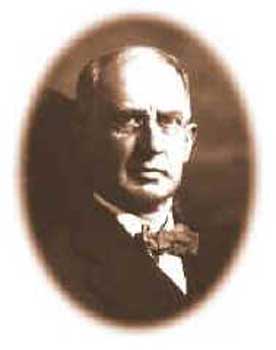 Hoover or vacuum cleaner
Hoover or vacuum cleaner
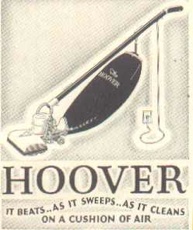 One of the bigger surprises while researching for this list was how little information is readily available for the person whose name is most associated with the vacuum cleaner.
One of the bigger surprises while researching for this list was how little information is readily available for the person whose name is most associated with the vacuum cleaner.
In fact no personal details at all. The main reason is clear. He was little more than an early corporate figure who began manufacturing someone else’s particular design in 1908 once the invention was already well-established. It would make about as much sense to call a computer a Gates. Another quaint twist. Hoover was American. Yet it is the British who turned ‘the hoover’ into an eponymous generic word. It’s rather as if Brits said ‘hovercraft’ while Americans referred to the same machine as a ‘cockerell’ (after it’s English inventor). From an outside perspective, one supposes ‘the Hoover’ for Americans might refer to the 31st pres. or a rather shady figure caught up in events such as the aftermath of JFK’s assassination. For the records, the vacuum cleaner was invented (as a manual machine) in 1868. The actual Hoover prototype with its unique rotating brush was the design of one James Murray Spangler. In fact a classic case of Stigler’s Law of Eponymy, of which numerous examples abound: “No discovery is named after its original discoverer.”
Macadam road surface, tar Macadam or tarmac
Our present high-speed motorways and interstates can trace their origin back to the aristocratic second son of the Scottish Baron of Waterhead, sometime resident in the United States. His was one of the first serious advances in major national highway engineering since the excellent initial advances by the Romans. He became involved in this branch of civil engineering due to being an estate owner and turnpike trustee. McAdam’s three essential innovations were to create a solid, compacted, well-drained foundation of rock and gravel; to raise the road surface above the surrounding ground-level, and to incorporate a camber for surface drainage. The major later development was the addition of a sealed, tarred surface. As with so many important inventors or innovators, he scarcely benefited personally from his system, which was rapidly and widely adopted throughout western civilisation. One might even perhaps aptly consider that he was steamrollered politically.
Sandwich, as bread or similar outside with filling between
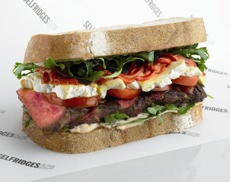 The placing of a filling between bread had a long and partly accidental history before it was identified and named. Its earliest known example is considered to have been consumed during the Passover feasts of the ancient Hebrews, when unleavened bread similar to Indian chupattis or Mexican tortillas would have been used. The noble Earl himself held various high diplomatic and military posts as was typical for English aristocrats of the time. In public life he was noted for his incompetence and corruption. Sandwich was nevertheless buttered on the clean-cut side too, notably in his laudable and wholehearted support for Captain Cook’s maritime explorations, which landed him the even more solid honour of having the Sandwich Islands named for him. However, when those were renamed the Hawaiian Islands his memory was stuck with the edible double-decker. Various explanations are offered as to how he became associated with this early convenience food. One possibility is that being such a busy man, he preferred to take his meals in that cleaner form at his desk. Another suggestion has it that the dry bread on both sides kept his fingers clean during long gambling sessions of cards without him having to leave the table and wash them at intervals. The bread-based type has in turn led to a few culinary variations such as the sponge sandwich. Philological spin-offs include the sandwich course and being sandwiched between people in a crowd.
The placing of a filling between bread had a long and partly accidental history before it was identified and named. Its earliest known example is considered to have been consumed during the Passover feasts of the ancient Hebrews, when unleavened bread similar to Indian chupattis or Mexican tortillas would have been used. The noble Earl himself held various high diplomatic and military posts as was typical for English aristocrats of the time. In public life he was noted for his incompetence and corruption. Sandwich was nevertheless buttered on the clean-cut side too, notably in his laudable and wholehearted support for Captain Cook’s maritime explorations, which landed him the even more solid honour of having the Sandwich Islands named for him. However, when those were renamed the Hawaiian Islands his memory was stuck with the edible double-decker. Various explanations are offered as to how he became associated with this early convenience food. One possibility is that being such a busy man, he preferred to take his meals in that cleaner form at his desk. Another suggestion has it that the dry bread on both sides kept his fingers clean during long gambling sessions of cards without him having to leave the table and wash them at intervals. The bread-based type has in turn led to a few culinary variations such as the sponge sandwich. Philological spin-offs include the sandwich course and being sandwiched between people in a crowd.
Shrapnel shell
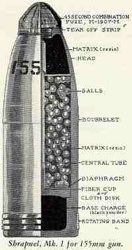 Common logic seems to suggest some eponymous names were inspired by their products, not vice versa. One that comes immediately to mind is Crapper. Surely Thomas Crapper’s name must have been derived from second-hand allusion? Perhaps he was a lavatory cleaner or attendant? Not a bit of it. The unfortunate fellow is forever down among the ordure as a result of his own ‘full-flush’ inventive mind! The same would seem to hold true for another Englishman, Henry Shrapnel. So well-known are the shards of shells called shrapnel, that his family surely acquired its name from them. Not at all. Shrapnel, an active-service army officer, was the inventor. His original design, a spherical cannon shell, exploded in mid-air, showering the enemy with lethal metal. It was the birth of a concept which ultimately led to the infamous cluster-bomb. The system became used early-on to counter the deployment of aircraft in wartime. Allied pilots of WW1 call it ‘Archie’. German shell-smoke was black, allied white. We used to hear A.A. shrapnel showering down on our roof during the Nazi blitz raids of the 1940s, and as small boys would collect the fascinatingly-shaped shiny stuff from the streets next morning. Shrapnel himself was one of the luckier inventors. He received a princely annual award of over $125,000 (today’s equivalent) for life from a grateful British Government.
Common logic seems to suggest some eponymous names were inspired by their products, not vice versa. One that comes immediately to mind is Crapper. Surely Thomas Crapper’s name must have been derived from second-hand allusion? Perhaps he was a lavatory cleaner or attendant? Not a bit of it. The unfortunate fellow is forever down among the ordure as a result of his own ‘full-flush’ inventive mind! The same would seem to hold true for another Englishman, Henry Shrapnel. So well-known are the shards of shells called shrapnel, that his family surely acquired its name from them. Not at all. Shrapnel, an active-service army officer, was the inventor. His original design, a spherical cannon shell, exploded in mid-air, showering the enemy with lethal metal. It was the birth of a concept which ultimately led to the infamous cluster-bomb. The system became used early-on to counter the deployment of aircraft in wartime. Allied pilots of WW1 call it ‘Archie’. German shell-smoke was black, allied white. We used to hear A.A. shrapnel showering down on our roof during the Nazi blitz raids of the 1940s, and as small boys would collect the fascinatingly-shaped shiny stuff from the streets next morning. Shrapnel himself was one of the luckier inventors. He received a princely annual award of over $125,000 (today’s equivalent) for life from a grateful British Government.
Galvanised (as iron)
Italy enters the list with the scientist Galvani. A famous experiment with frogs’ legs led him to make the first connection between electricity and the movement of animate life. Thanks to a genial technical dispute with the better-known Volta about the essence and origin of organic electricty, he received from Volta the compliment of a direct current of electricity produced by chemical action being called ‘galvanism’. The dispute also led to Volta producing the first battery, and of course Volta also reaped his share of eponymous fame. ‘Galvanism’ became an outmoded term, but was modified to the words ‘galvanisation’ and ‘galvanised’. These have become a permanent part of our vocabulary for metal plated by electrical process. They have also bequeathed us the figurative phrase ‘galvanised into action’!
Contributor: Spanner-In-The-Works
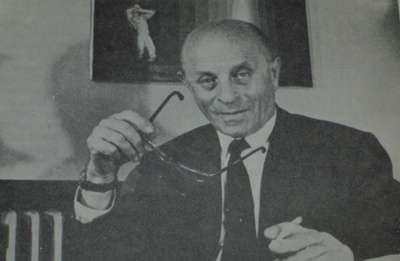

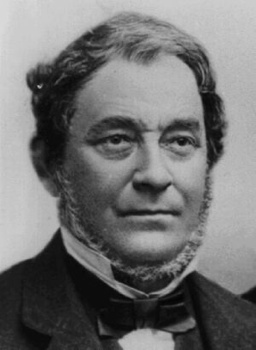
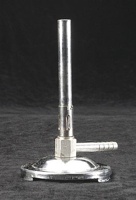
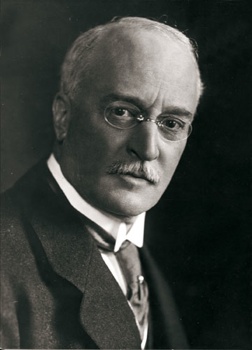
![Ferris[1]](https://listverse.com/wp-content/uploads/2008/08/ferris1-tm.jpg)
